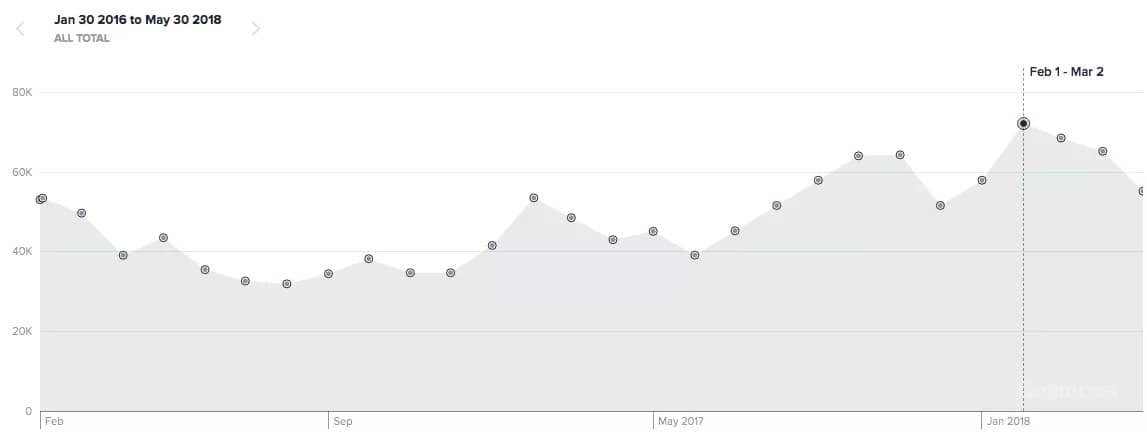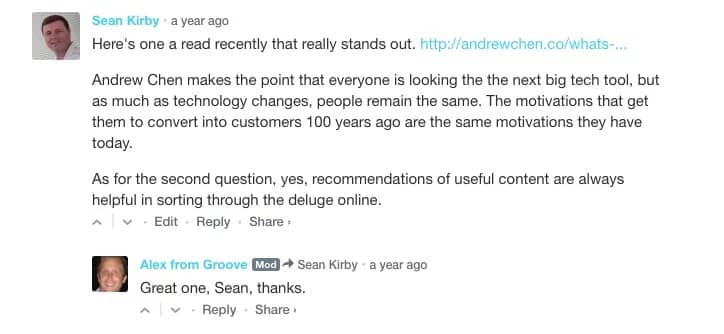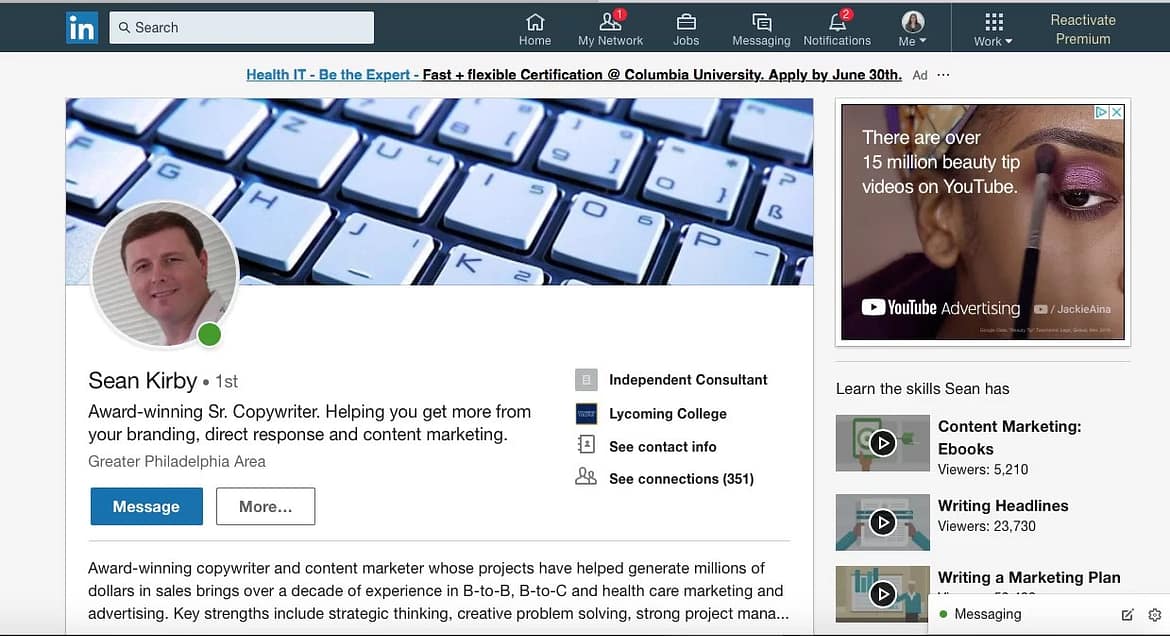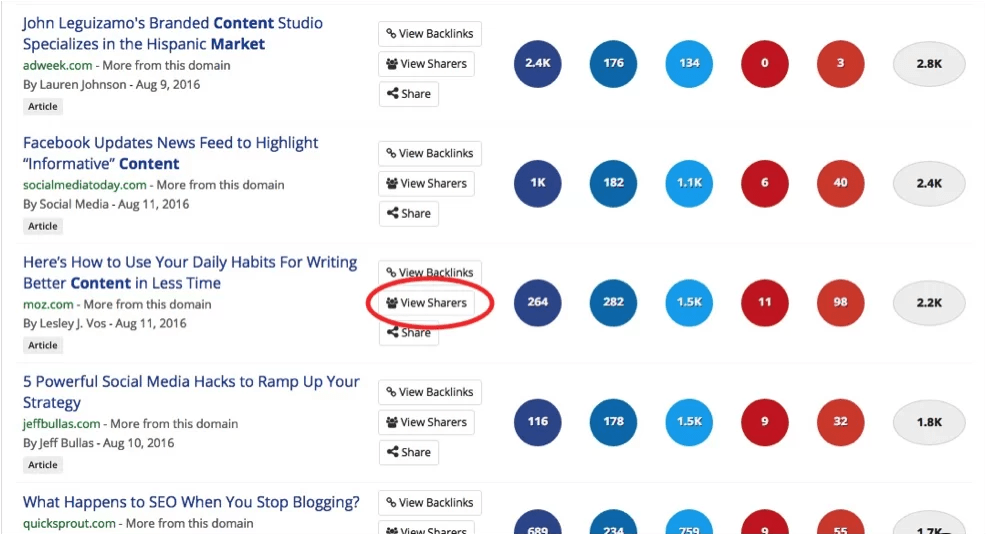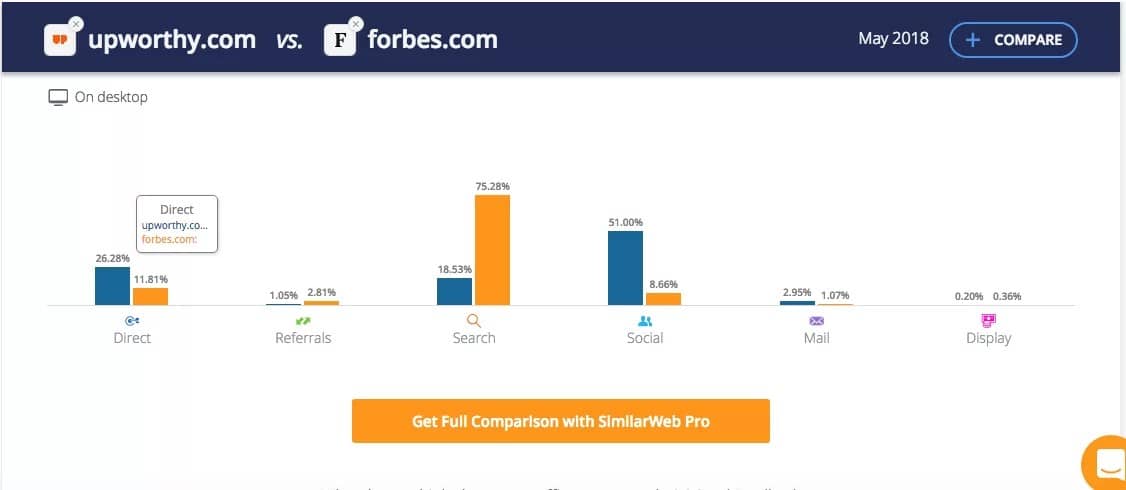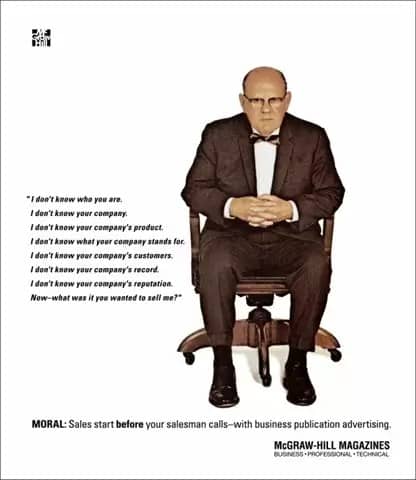When I decided to write about how to drive traffic to a blog, my first thought was to create a massive list of blog promotion tactics. Honestly, that would probably generate more interest, social shares and backlinks than this post.
So why aren’t I doing that?
Because it wouldn’t be as helpful to you. At least not yet. In fact, it would probably do you more harm than good. You could spend hours every day completing a list like that with very little to show for it. That’s one reason “How do I get more traffic to my blog?” is one of the questions I hear most.
It’s not that those promotional tactics are bad. In fact, you’ll need to use many of them to build your audience. But you need to know how and when to use them.
The first thing you need to do is change your mindset away from “I have a new blog post, now how do I drive traffic to it?” Really, you need to start way before you write your post, especially in the beginning. Blog promotion is the epitome of flywheel marketing.
If you’re not familiar with the concept, read this excerpt from Jim Collins’ book Good to Great:
Picture a huge, heavy flywheel—a massive metal disk mounted horizontally on an axle, about 30 feet in diameter, 2 feet thick, and weighing about 5,000 pounds. Now imagine that your task is to get the flywheel rotating on the axle as fast and long as possible. Pushing with great effort, you get the flywheel to inch forward, moving almost imperceptibly at first. You keep pushing and, after two or three hours of persistent effort, you get the flywheel to complete one entire turn. You keep pushing, and the flywheel begins to move a bit faster, and with continued great effort, you move it around a second rotation. You keep pushing in a consistent direction. Three turns … four … five … six … the flywheel builds up speed … seven … eight … you keep pushing … nine … ten … it builds momentum … eleven … twelve … moving faster with each turn … twenty … thirty … fifty … a hundred.
Then, at some point—breakthrough! The momentum of the thing kicks in in your favor, hurling the flywheel forward, turn after turn … whoosh! … its own heavy weight working for you. You’re pushing no harder than during the first rotation, but the flywheel goes faster and faster. Each turn of the flywheel builds upon work done earlier, compounding your investment of effort. A thousand times faster, then ten thousand, then a hundred thousand. The huge heavy disk flies forward, with almost unstoppable momentum.
Getting traffic to your blog is just like pushing that flywheel. It takes a tremendous amount of effort to get it going, and you just can’t afford to spend time and effort on a spray and pry approach. You need to exert your energy on the things that are going to get the wheel moving.
But when you do build momentum, everything becomes much easier. For instance, when you get more subscribers, there are more people likely to share your posts, which brings in new readers who may subscribe. That’s one turn of the wheel. And you can see how it builds each time around.
And that’s just one simple example. The ideal blog promotion plan for you may include a combination of compounding tactics and factors. But you have a little work to do first.
Start here for best results
Before you jump into promotional tactics, you need to develop a strategy. And I’m not just talking about a marketing strategy. I’m talking about a business strategy. Here’s why.
Your potential readers don’t need another blog. They already have dozens to choose from in just about every niche. What they need is something better. They need something more actionable, more insightful or more relevant. They need something they can’t get elsewhere.
You need to determine how you are going to differentiate and provide this unique value.
For example, when Peep Laja decided to start ConversionXL, he studied the competition first. He noticed that most posted short articles that were a little thin on the content. So he decided to go in-depth. The results speak for themselves.
Groove is another example of a blog that found success through differentiation. Instead of writing the standard “how to” articles most start up blogs post, Groove’s founder offered a transparent look at Groove’s successes and failures in their Startup Journey blog. He has stated that this is their biggest driver of new customers.
If you want blogging to work for you, it’s essential to figure out what’s going to make you different than the sea of other options.
Study the other blogs in your niche. What are their strengths? What are the weaknesses? Are there any content gaps you can exploit? Can you niche down? Can you establish a unique voice or angle that stands out?
But don’t just think about the topics of your blog. Your audience is even more important to your strategy. Determine who your ideal reader is and formulate a promotion strategy around that.
If you know that your target readers are active on reddit, for instance, it makes sense to spend effort establishing and leveraging a presence on relevant subreddits. If they aren’t, then don’t waste time there.
When researching your audience, consider questions such as:
- Where do your target readers hang out online?
- How do they discover new content?
- How do they prefer to consume that content?
The simplest and most effective way to research your audience is to talk to them directly. Identify people who might benefit from your blog, let them know what you’re doing and ask them if you can set up a quick chat. Here’s a few places you can find potential readers.
Similar blogs
The comments section is a great place to find potential readers. These people have shown that they not only read this content, but also actively engage with it. And many comment apps include the commenter’s profile.
Look, this handsome fellow commented on this blog.
With that name, image and profile, it shouldn’t be hard to find a way to reach out. Here are just two options:
Look, his site is listed. I can use the contact page to reach out.
Here he is on LinkedIn. Maybe send an InMail?
Forums and communities related to your niche
The idea here is the same as with the comments section. To increase your chances of building relationships that can drive blog traffic, be sure to participate in the community before asking for favors.
BuzzSumo
Social shares are another action that may indicate a reader is a good fit for your content. For that, there is no better tool than BuzzSumo.
The app shows you the most shared content for your search term, and even breaks it down by social channel. Simply click the View Sharers link, and you can see people who shared that content in the first 2-3 days after it was published.
And here’s one last consideration as you plan your strategy:
Your content will dictate a large part of your strategy. SEO won’t be as important for a blog of your poetry as it would for a “how to” blog, because people don’t typically search for random poems. Instead, finding ways to generate social shares and word of mouth would be critical for driving traffic. Ask yourself: how and why would a reader likely come across my content?
Consider the difference between these two sites:
Most of the traffic to Upworthy comes from social media, while most Forbes gets the majority of its traffic from search engines.
That being said, you’ll most likely want to focus one or more of these things.
Build an email list.
Email gives you direct access to your readers. So every time you publish new content, you can let them know about it. And it’s not just effective at bringing traffic to your site. It also converts readers into paying customers. According to the DMA, email has an average ROI of 3800 percent and one in five companies report an ROI of over 70:1!
One of the most popular ways to collect email addresses is to offer a resource such as an ebook, special report or email course. Just make sure that what you’re offering gives enough value for readers to justify giving you their email address.
Get backlinks.
You may be wondering why I listed backlinks specifically rather than the more complete SEO. It’s because generating backlinks give you a single SMART goal to focus on. And like all good flywheel marketing tactics, the results compound.
This resource offers some good information on link building campaigns and offers practical ideas on generating backlinks.
Develop your brand.
It’s easier to get backlinks, social share views and other benefits when you are known as an established expert in your field. Think about it, which would you be more likely to link to and share: an article by someone you’ve never heard of or someone generally known and respected in your industry?
Guest blogging is a great way to do this. So don’t save your best articles just for your site. The value goes beyond direct referral traffic.
You can also invest in strategies outside of blogging to build your reputation. For instance, you can leave well thought out, helpful answers and comments on sites like Quora and Hacker News. Or you could try to get featured on podcasts or in news stories.
When you’re ready to implement your strategy, follow this framework.
The 3 Step Content Marketing Process to Drive Blog Traffic
Step 1: Lay the groundwork
It’s tempting to want to jump right into the creation part of content marketing. After all, that’s the fun part. But you shouldn’t. This old ad explains why:
Make no mistake. You’re trying to sell your content, even if you aren’t charging money. If you want people to link to or promote your content, you’re asking people to spend their time and effort. And you’re more likely to have success if they know a little bit about you first.
The easiest thing you can do to get on influencers’ radars is start sharing their content. You probably shouldn’t share everything they’ve ever written. That would be disingenuous. But if you share enough over a period of time, those influencers should start to recognize your name.
Make sure to tag them when you share on your social media accounts. This way, they’ll get notified and start to recognize your name.
Another option is to comment on their blog posts. I’m not talking about generic comments like, “Great post!” Nobody is going to remember you for that. I mean thoughtful comments that add to the conversation.
Similarly, you can participate in forums and online communities these influential people belong to. This can be a great way to start a dialog directly.
If you really want to stand out and get on an influencer’s good side, use your unique expertise or skills to him or her out. Let’s say, for instance, that you are great with technical web development. You could offer some suggestions on ways to speed up the influencer’s site.
No matter how you choose to get noticed and connect, the key is to add value without an expectation of anything in return. Give multiple times before you ask for help promoting your content.
Step 2: Create something worth promoting
Think about all the big promotional tactics you hear about. Getting influencers to share your content. Building high authority backlinks. Syndication. None of those will be effective if the content doesn’t warrant it. Nobody wants to share or link to crappy content.
At a minimum, you want to make sure your content is:
Unique in some way. There’s a lot of parroting on the Internet these days, and it feels like you read the same articles over again and again with just different wording. Add something new to the conversation.
Easy to read and understand. If it feels like work, I’ll just go to the next option.
Entertaining. I know a lot of people think of content as more educational, and to an extent it is, but the education has to be enjoyable or nobody will bother.
Satisfying. Great content answers the questions readers have and gives them the information they need to put it to use. There should be no reason to go and search another source after consuming great content.
For more specific, in-depth advice on crafting compelling content, check out these articles:
Why No One is Reading Your Content – And What You Can Do About It
How to Write Engaging Content in a Boring Industry
But this step is about more than just creating content that’s good for readers. You should also optimize your posts for your promotion strategy while you are still creating it.
Does your strategy focus on influencer outreach? Find ways to make the influencer look good. Mention them in your article, quote them, or validate something they wrote about. That’s what Brian Dean did with is infographic on the shrinking dollar.
He saw that a lot of popular financial bloggers were writing about the topic. So he knew that backing up those rants with visually interesting hard data would be appealing to these influencers.
How about building links? Make sure to turn your content into link bait. Here are a few ways:
- Be controversial. Many sites will link to information they agree with. But sites also link to content they disagree with. Being a little controversial is a great way to invite debate.
- Include an infographic or interactive tool. These types of resources get a ton of backlinks.
- Make it epic. Super in-depth content takes a lot of work and time to create. It’s much easier for most influencers to link to this information rather than do all the work to create it on their own.
What if your strategy centers around generating shares among readers? Then craft your post with that goal in mind. Be surprising. Be funny. Make the sharer look smart. Appeal to their sense of identity (or challenge it).
Consider this article on Wait But Why, which checks a couple of those boxes. It has racked up 1.2 million shares so far.
Step 3: Promote smart
It’s finally time to start promoting your content. But you have to be smart about it, otherwise you’ll waste time on things that don’t give you enough of a return on your investment.
Start by going for the low hanging fruit first.
Share your content to your owned media. This includes things like emailing your subscriber or customer list, posting a link on your social media accounts, and republishing on LinkedIn and Medium.
Reaching out to everyone you mentioned or featured in your content is another easy tactic that usually produces good results. After all, who doesn’t like to be featured in stories that help increase their exposure? People will often help spread this content without you even asking.
If you can find these people’s email addresses, shoot them a short note letting them know that you included them and provide a link so that they can read t for themselves. If you can’t find their email, you can send a tweet tagging them.
Finally, ask people in your close circle to share your content. This is a great place to start, especially if you are just getting started and don’t have a big social media following or email list.
Next focus your promotional efforts on your priorities from the strategy phase. If your focus is on SEO, concentrate on link building. If it’s social, do outreach to get shares.
Conclusion
I’ll be honest. This isn’t an easy process. In fact, it can be downright agonizing. You’ll wonder if it is worth it all. But stick with it.
After building momentum, you can then add more tactics to keep growing your traffic. But that’s a post for another time. Stay tuned.




